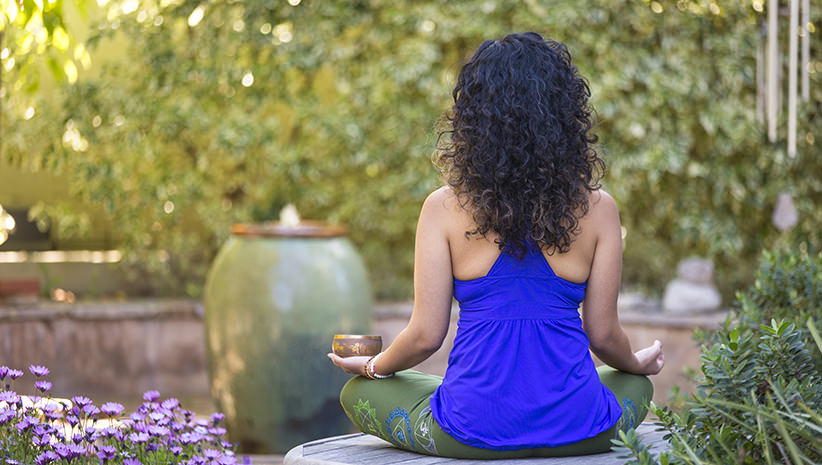
Aside from the latest eco-friendly yoga mat, a popular accoutrement of the modern yogi is a strand of prayer beads called a mala. A mala is often worn draped around the neck or wrist.
While for some people a mala is just a trendy accessory, for others, a mala represents a link to the inner path. It is a tool to connect with the Divine and a reminder of this aspiration.
The History of Mala Beads
The use of malas dates back thousands of years to 8th century B.C. in India when ancient sandstone sculptures depicted people praying with beads to Lord Shiva. The word mala is short for the Sanskrit “japamala,” with “japa” meaning recitation and “mala” meaning garland.
A japamala basically helps the aspirant focus within and keep count of mantra recitation. Although this is the origin of malas, other paths including Buddhism, Christianity, and Islam also adopted similar practices.
Traditional malas (in Hinduism or Buddhism) consist of 108 beads or numerical derivations adding up to multiples of 9 (e.g. 27, 54). This number represents wholeness. The number 108 involves complex, mystical energies, as discovered by ancient Vedic sages who were expert mathematicians.
Too numerous to list all of them, here are a few of the fascinating facts that relate to 108. The sun’s diameter is 108 times the earth’s diameter. The 12 zodiac signs multiplied by the 9 planets equal 108. Lord Shiva’s cosmic dance of Lord Shiva has 108 poses. And the heart chakra contains 108 energy channels.
Working with a mala connects us with such mysterious powers.
In addition to its small beads, the mala contains a larger bead called the meru, bindu, or guru bead. This bead helps the practitioner feel where the strand begins and ends, thereby allowing him or her to keep the eyes closed and maintain focus.
This special bead also represents the connection between the student and “guru” (one who leads us from darkness to light).
How to Use a Mala
To use a mala, the practitioner dangles the strand between the middle and index fingers of the right hand. Starting at the guru bead, the practitioner uses the thumb to advance each bead over the middle finger towards the body, chanting aloud or silently. (The index finger is avoided since it represents the ego).
When an entire circuit of the mala has been traversed, the practitioner turns the mala around and resumes chanting in the other direction. Working with a mala calms distractions and deepens meditation, and even one round on the mala serves as a rewarding component of sadhana.
How Mala Beads Are Made
Malas may be made from a variety of different materials. One of the most common is rudraksha, which is a seed of a sacred Himalayan tree connected with Lord Shiva.
It is said that Lord Shiva (also called Rudra) emerged from deep meditation and cried a tear (aksha) for humanity, which became a seed that blossomed into a tree. To derive the utmost benefit, a rudraksha mala should be worn directly touching the skin where it protects the aura, dissolves negative karma, and conveys health benefits.
Followers of Lord Krishna use a mala made from the wood from the tulsi plant. Some Buddhists use a mala made from yak bones or seeds from the Bodhi tree.
Semi-precious stone malas imbue the practitioner with the properties of the stones themselves. Ultimately, the perfect mala finds each practitioner, guiding him or her along the path, offering a reservoir of peace.
A spiritual object that accumulates energy from the practitioner’s devotion, a mala should be treated respectfully whether worn or placed on an altar and handled only by the one using it.
Like a gentle tool for introspection, a mala helps deepen the calling to turn within, allowing the practitioner to be one with the breath, the chant, the practice.
Here Are Our Favorite Mala Beads:
1. Lava Mala Necklace by Tulku
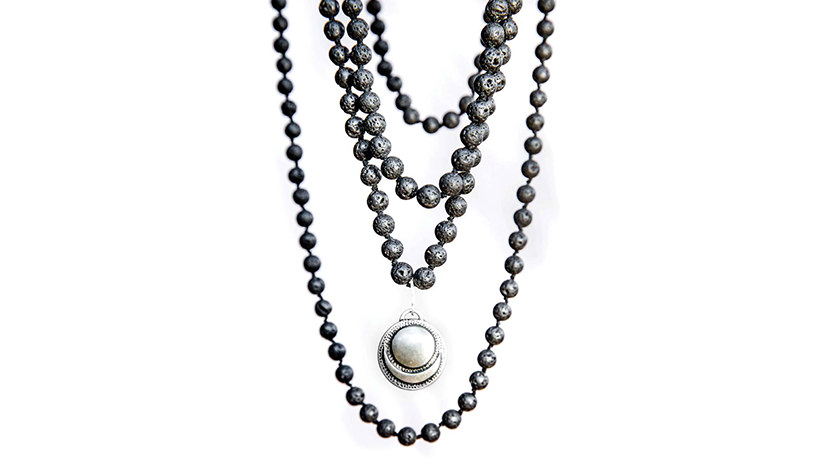
Lava represents fire and transformation. Get it here.
2. Sandalwood Mala by Jen Stock
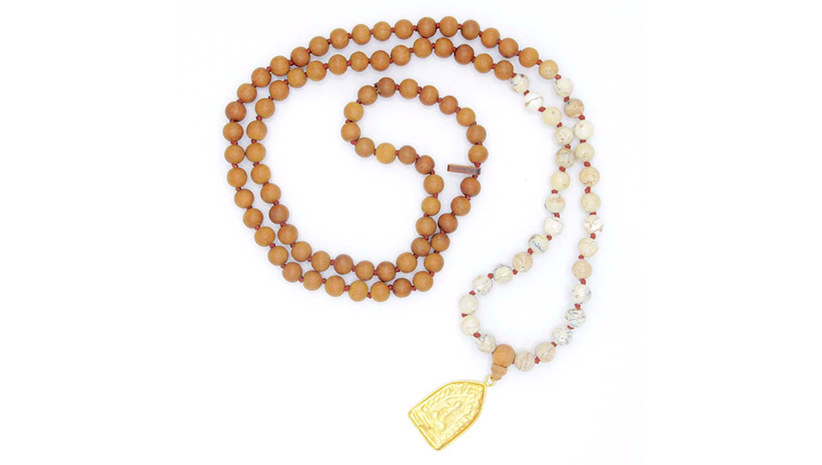
Mindful jewelry for everyday life with sandalwood, opal, and 24K Buddha pendant. Get it here.
3. I Am Me Necklace by Mala and Mantra

Contains 12 different core semi-precious gemstones: Black agate, Botswana agate, amethyst, amazonite, crystal quartz, howlite turquoise, labradorite, pyrite, rose quartz, sodalite, smoky quartz, tiger’s eye. Get it here.
4. Mother Moon by Energy Muse
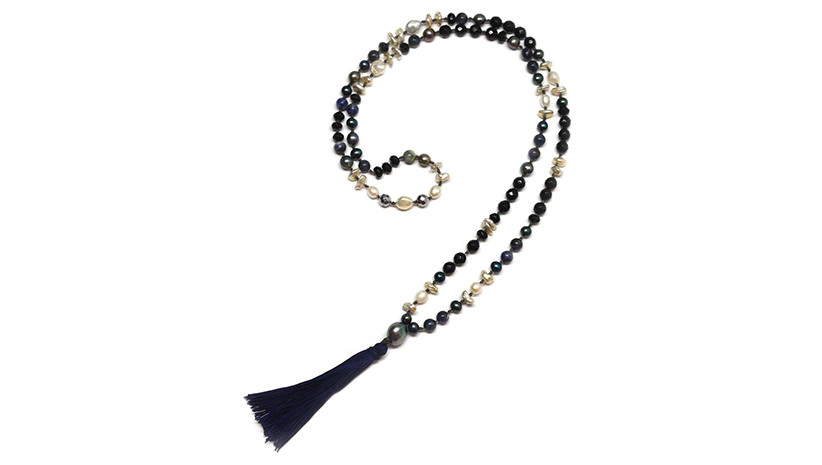
Fresh water pearls, white pearls, sodalite, onyx, and hematite. Harmonizes with moon cycles. Encourages graceful transformation. Get it here.
5. Aminda Buddha by Salt Spring Malas
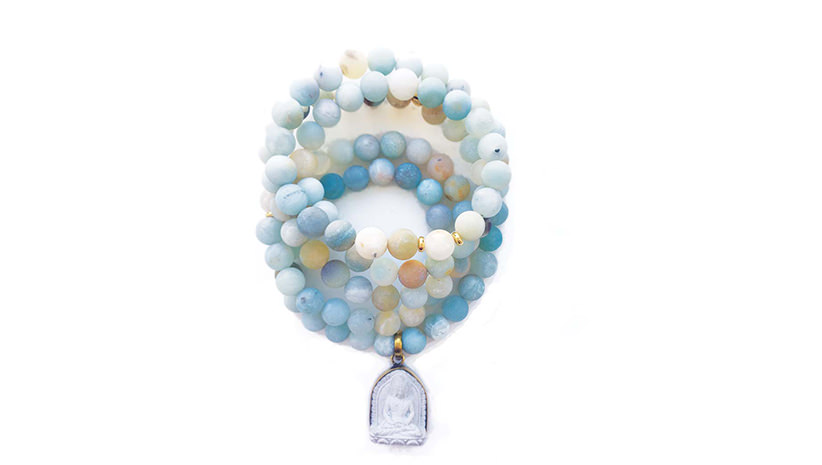
Amazonite beads enhance expression. Get it here.
6. Happy Buddha Balance Chakra Mala by I Love Chakra

The rainbow of different crystals represent each of the seven chakras to align each energy center. Get it here.
7. Black Onyx Mala by I Love Shakti
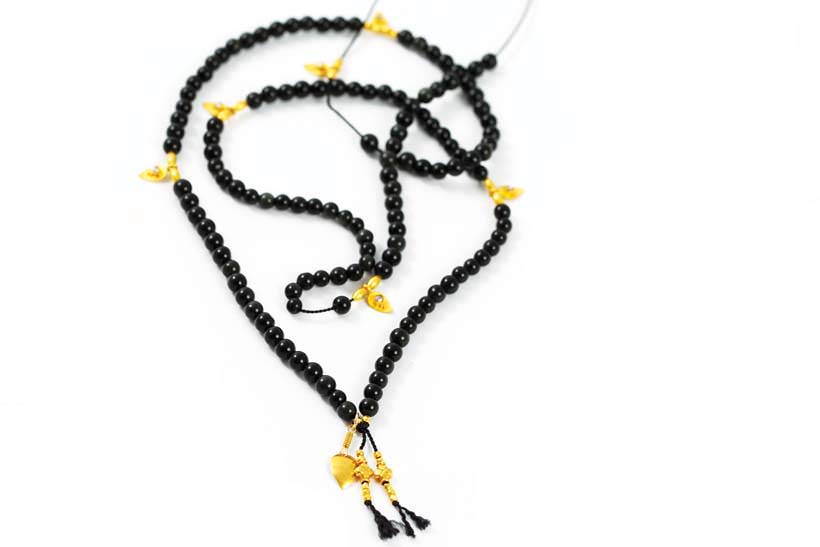
Black onyx cultivates inner strength and focus. Also contains 14K yellow gold lotus petals. Get it here.
8. Atlas Wrap by Bali Malas
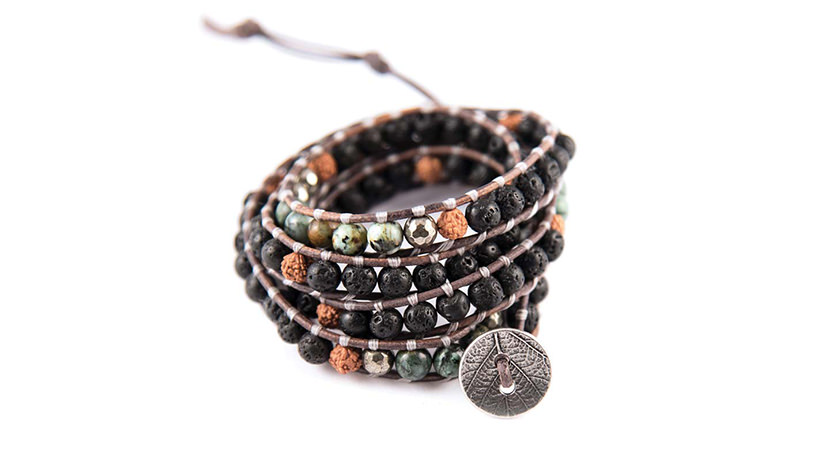
Pyrite, lava rock, rudraksha, and aventurine energetically enhance the energy of the heart and promote spiritual attunement. Get it here.
9. Bloodstone Mala by Civettala

Also known as heliotype, bloodstone has powerful healing properties. It also supports courage and altruism. Get it here.
10. Soul Purpose Mala by Shaman Sisters
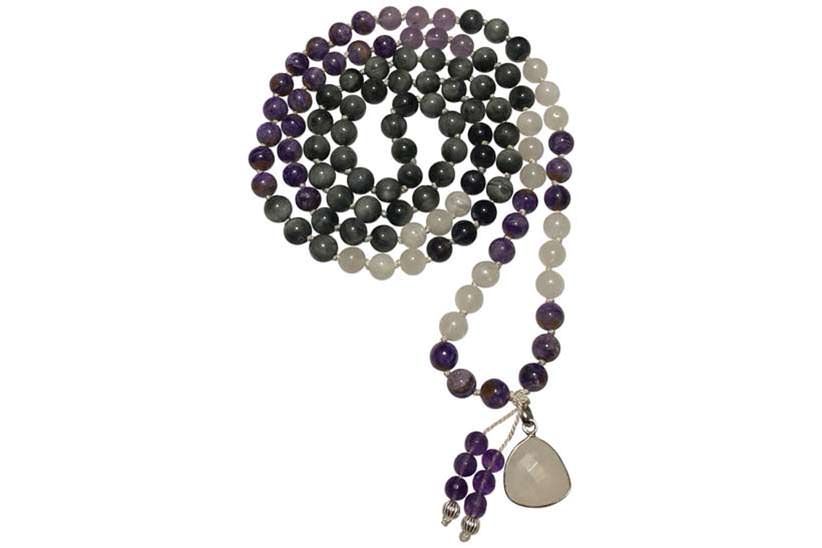
Moonstone, charoite, iolite, amethyst, and grey hawk’s eye elevate spiritual growth and accelerate soul level transformation. Get it here.
11. Clarity and Balance by Jeanne Verger

Clear quartz is the master healer, it amplifies thoughts and energies and potentiates other crystals. Balances all planes of energy. Get it here.
Psychic Palmist of India Professor Sasi Velupillai & Reiki Master Alexandra Juliani, M.A. are Directors of the Vedic Healing Institute/Temple, offering Sanskrit mantra classes & gatherings, puja prayer ceremonies, and Pilgrimages to India. Info: (310) 397-2405/ www.vedichealinginstitute.com / www.indiainnersearch.com / www.professorsasi.com
